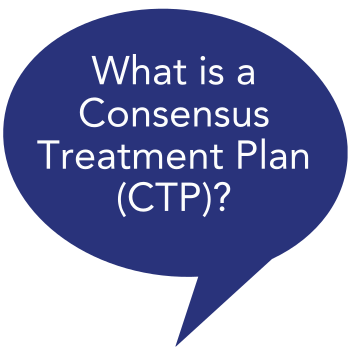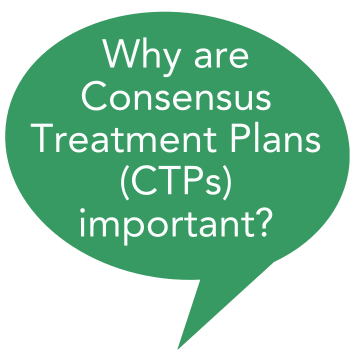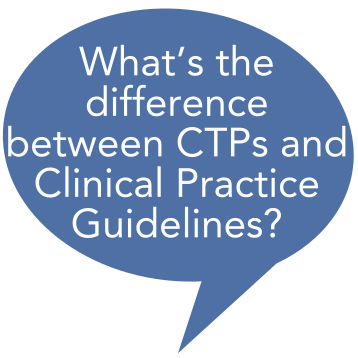Polyarticular Juvenile Idiopathic Arthritis

What is polyarticular juvenile idiopathic arthritis?
Polyarticular juvenile idiopathic arthritis is a type of arthritis that affects children. It is often called poly JIA. It is an autoimmune disease. There are seven different subtypes of juvenile idiopathic arthritis.
Poly JIA is diagnosed based on a child’s symptoms and exam findings.
Poly JIA affects five or more joints. It is often found on both sides of the body. For example, it might affect both the left ankle and the right ankle. It can affect both large joints and small joints. Among children with JIA, about 25% have poly JIA.



Click the images above for more information
What does the poly JIA CTP say?
It provides three different treatment plans for kids who are newly diagnosed with poly JIA. It also gives suggested schedules for check-ups and blood tests.
The three plans are:
1. Step-up plan – initial treatment with a nonbiologic disease-modifying antirheumatic drug [DMARD] followed by a biologic DMARD
2. Early combination plan – combined treatment with a nonbiologic and biologic DMARD combined within a month of treatment initiation
3. Biologic only plan – initial treatment with a biologic DMARD alone
Learn More about Treatments for polyarticular juvenile idiopathic arthritis
There is currently no cure for poly JIA. However, there are many effective treatments that can help your child live a happy and active life.
Nonsteroidal anti-inflammatory drugs (NSAIDs)
Nonsteroidal anti-inflammatory drugs (NSAIDs) are given to a child to help relieve pain and stiffness. NSAIDs can be over-the-counter medicines like ibuprofen (Advil or Motrin), or a prescription medicine called naproxen (Naprosyn).
Corticosteroids
Corticosteroids are a type of steroid that are also used to reduce inflammation and relieve pain. They can be given orally or by injection or infusion. Some examples of corticosteroids are Prednisone, Prednisolone and Methylprednisolone.
Disease-modifying antirheumatic drugs (called DMARDs)
Disease-modifying antirheumatic drugs (called DMARDs) are also often used to treat polyarticular juvenile idiopathic arthritis. These medicines work by adjusting the child’s immune system to reduce inflammation. Although there are many different types of DMARDs, all DMARDs can help reduce the symptoms of polyJIA including stiffness, pain and swelling.
There are three main types of DMARDs:
- conventional synthetic (csDMARD) – The most common one is called methotrexate (Rheumatrex, Trexall, Rasuvo, Otrexup). Others include leflunomide (Arava), hydroxychloroquine (Plaquenil), and sulfasalazine (Azulfidine).
- biologic (bDMARD) – Some examples are adalimumab (Humira) and its biosimilars; etanercept (Enbrel); golimumab (Simponi Aria); tocilizumab (Actemra); and abatacept (Orencia).
- targeted synthetic (tsDMARD) – Some examples are tofacitinib (Xeljanz) and upadacitinib (Rinvoq).
You can learn more about each of these different DMARDs here or by talking to your physician.
Parent Perspective

“Rheumatology centers all over the world take great care of their patients, but it seems that no one does it the same way. I consistently see messages on social media support groups from parents who seem frustrated because they have heard of another child who was prescribed a different treatment, or medicines in a different order, or steroids first, or more aggressive/more conservative treatment than what they’ve experienced.
By more broadly implementing the poly JIA consensus treatment plan (CTP), we may be able to alleviate some of this constant fear and worry from families that they aren’t getting the right or best care.”
- Melanie Kohlheim, whose daughter was diagnosed with poly JIA as a toddler in 2012.
Want to learn more about polyarticular juvenile idiopathic arthritis CTPs?
Check out some other research.
Optimizing the Start Time of Biologics in Polyarticular Juvenile Idiopathic Arthritis
This study using the CARRA Registry compared the effectiveness of three CTPs for Poly JIA. It concluded that there were not significant differences between the three groups after 12 months. The study focused on achieving clinically inactive disease without glucocorticoids. The research showed that it was more likely to achieve this with early combination therapy.
This research looked at the effects of introducing biologics early in patients with untreated Poly JIA. The study, which used CARRA Registry data, concluded that starting biologics early is associated with getting to inactive disease more quickly.
After following nearly 300 children with poly JIA in the CARRA Registry for three years, researchers discovered that patients who start Early Combination therapy (biologics + methotrexate together) have better outcomes than those who receive Step-Up therapy,
which starts with methotrexate alone. The study also found that patients who start biologics very early in general have the best disease trajectory.